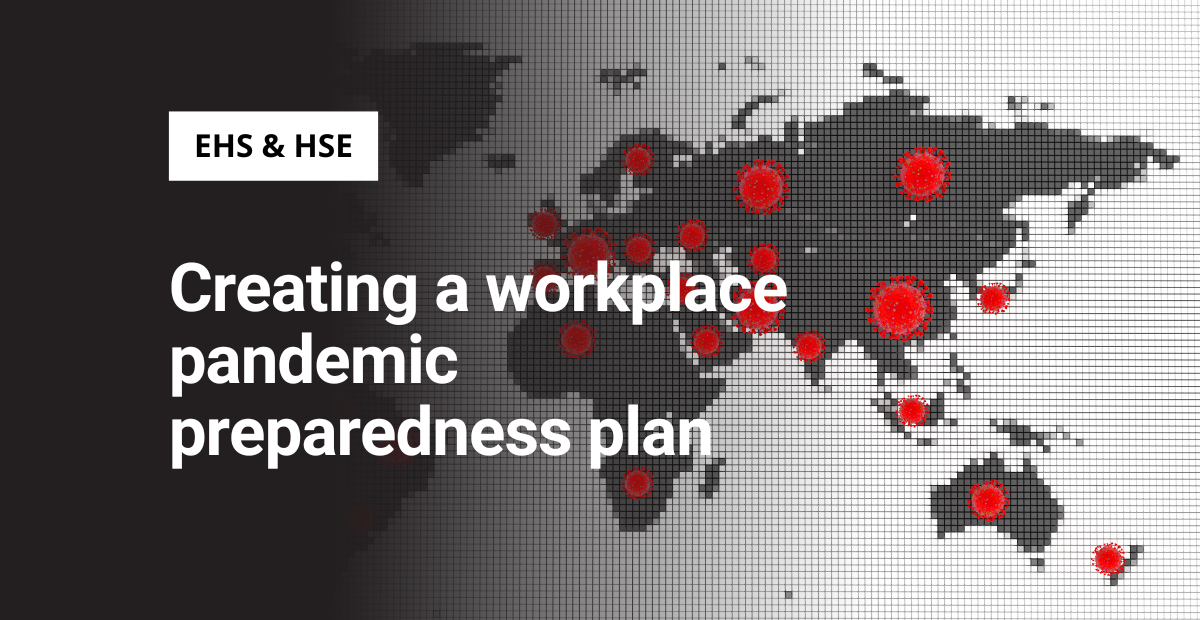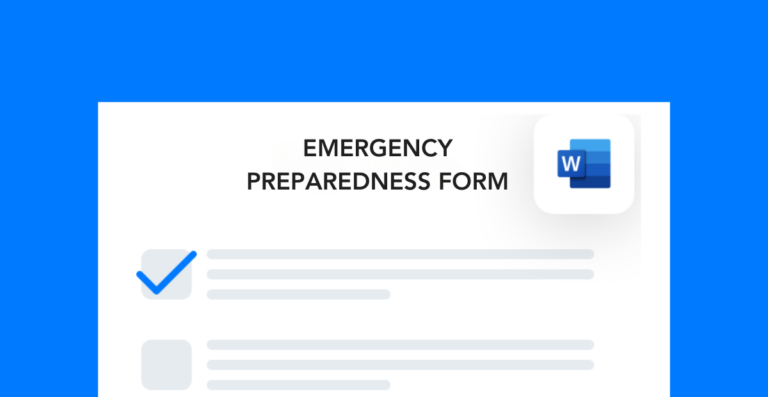When the COVID pandemic happened, it threw a lot of us in the safety profession for a loop. It took health protocols to a new level and made us question our emergency strategies.
One lesson I took from it was to always have a solid plan in place for these types of events. So, here are my recommendations for creating an effective workplace pandemic preparedness plan for your site.
Free form!
Fill out this template to have all the essential contact information and a list of critical operations when emergencies happen.
What is the point of a pandemic preparedness plan?
Like any EHS plan, a pandemic preparedness plan sets up a standard procedure for responding to a certain type of incident. Let’s be honest: creating a plan doesn’t mean anything if you don’t use it.
In the EHS field, it’s really easy to make a document like this, check off a box, and forget about it in a file folder somewhere.
And often the biggest benefit you get from these documents is while making them. That’s because the process of planning requires you to think through and anticipate some of the issues you might encounter.
What are the benefits of having a plan?
There are three main benefits of having a pandemic preparedness plan in place:
- Prevent the rapid spread of illness.
- Reduce productivity slowdowns during a pandemic.
- Mitigate pandemic chaos by establishing a strategy before issues occur.
I can’t stress enough how important it is to have a site-specific plan. If you download an EHS plan template, you almost certainly will need to customize it to your needs.
What should I include in the plan?
Below are the main topics your pandemic preparedness plan should cover.
Pandemic risk assessment
Remember at the beginning of the pandemic when companies were left to develop their own risk mitigation strategies? Before there were testing and gathering requirements?
The risk assessment section of your pandemic preparedness plan should outline how you will assess developing risks in real time. I’d highly recommend considering answers to these questions:
- How frequently will we assess risks during a pandemic? Hourly? Daily?
- If the risk level changes, how will that affect safety protocols?
- What are the categories of risk we will use to assess site safety?
- Who handles upgrading or downgrading the risk level?
- Who will conduct the risk assessments?
Pandemic communication strategy
The COVID pandemic proved just how important communication strategies are when it comes to handling emergencies. Lack of information created a lot of confusion and disorganization.
Your communication strategy should answer these questions:
- How will we notify employees of new protocols and provide updates?
- How often will we provide updates?
- What will be the primary channel of communication?
- Who is responsible for writing and sending out critical information?
- Where can employees go for resources in the event of a pandemic?
Remember, you don’t want to have 20 different sources of information. Instead, centralize your information hub so that all your workers receive the same information at the same time.
Policies and procedures
A pandemic can greatly impact your workers’ daily schedules and habits. That’s why your plan should establish new policies and procedures you will enact if a pandemic happens.
Here are some categories you should consider for this section of the preparedness plan:
- Time off and/or remote work policy
- Social distancing procedures
- Contact tracing
- Daily schedule (staggered shifts, lunches, etc.)
- PPE policy
- Hygiene and sanitation procedures/policies
Pandemic training
Your workplace pandemic preparedness plan should cover training requirements for both frontline workers and managers. Topics you might create training materials for include:
- How to protect yourself against exposure
- Proper social distancing and hygiene
- Signs and symptoms of infection
- Effective pandemic leadership and management
Obviously, the training content will vary depending on what type of illness you’re dealing with. If you can, try to prepare outlines of pandemic training that you can fill in if something does happen. That way, you can devote your time and resources to critical areas of the operation.




